Tools Required
J 35944-A Transmission Oil Cooler Flusher
Removal Procedure
Important: Transmission oil circulates between the transmission assembly and the transfer case. In situations where transmission related failures circulate debris into the transfer case, the transfer case must be disassembled, cleaned, and inspected for damage.
- Raise and support the vehicle. Refer to Lifting and Jacking the Vehicle in General Information.
- Remove the transmission lower bell housing bolt located between the engine oil pan and the transmission oil pan.
- Remove the powertrain (engine, transmission, frame) from the vehicle. Refer to Engine Replacement in Engine Mechanical - 3.5L or Engine Replacement in Engine Mechanical - 3.6L (LY7).
- Remove the fluid filler tube nut from the exhaust gas recirculation (EGR) valve.
- Remove the fluid filler tube bolt from the transaxle.
- Remove the fluid filler tube.
- Remove the transmission bell housing bolts (2).
- Remove the transaxle brace bolts.
- Remove the transaxle brace.
- If the vehicle is equipped with AWD (M76), remove the transaxle brace bolts and nuts.
- Remove the transaxle brace.
- Remove the coolant inlet pipe. Refer to Radiator Inlet Hose Replacement in Engine Cooling.
- Use a utility stand with a block of wood in order to support the transaxle.
- Remove the transaxle mount upper nuts.
- Remove the transaxle mount bracket bolts.
- Remove the transaxle mount bracket.
- If equipped with LX9, remove the starter motor bolts.
- Remove the starter motor.
- If equipped with LY7, remove the starter motor bolts.
- Remove the starter motor.
- Remove the torque converter bolts. Refer to Flywheel to Torque Converter Bolt Replacement .
- Remove the transmission upper brace nut located behind the power steering pump and above the transfer case.
- Remove the transmission upper brace bolts (1, 2).
- Remove the transmission upper brace.
- Remove the transmission bolt near the crank sensor and the engine coolant (block) heater.
- Separate the transmission from the engine.
- Install the transaxle to the transmission support fixture. Refer to Transmission Support Fixture Assemble in Automatic Transaxle - 4T65-E Unit Repair.
- If the vehicle is equipped with AWD (M76), remove the transfer case. Refer to Transfer Case Removal in Automatic Transaxle - 4T65-E Unit Repair.
- Flush the transaxle oil cooler and the transaxle oil cooler hoses. Refer to Transmission Fluid Cooler Flushing and Flow Test .
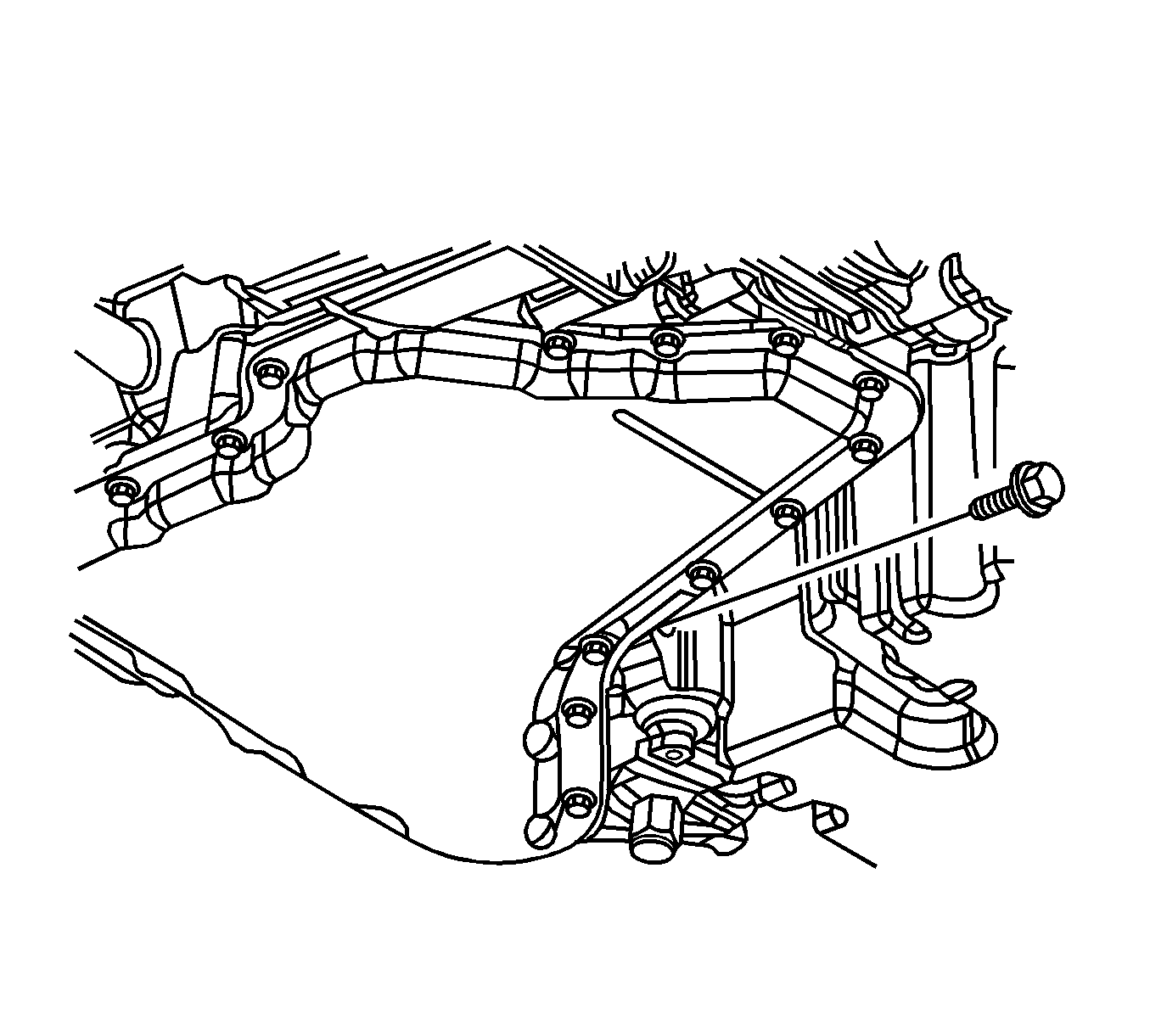
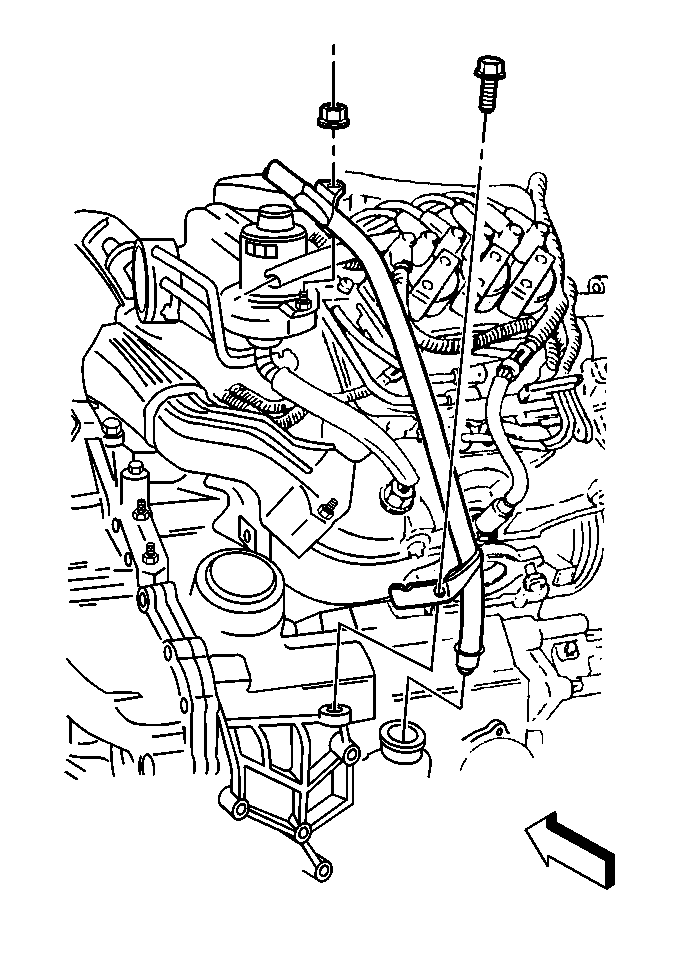
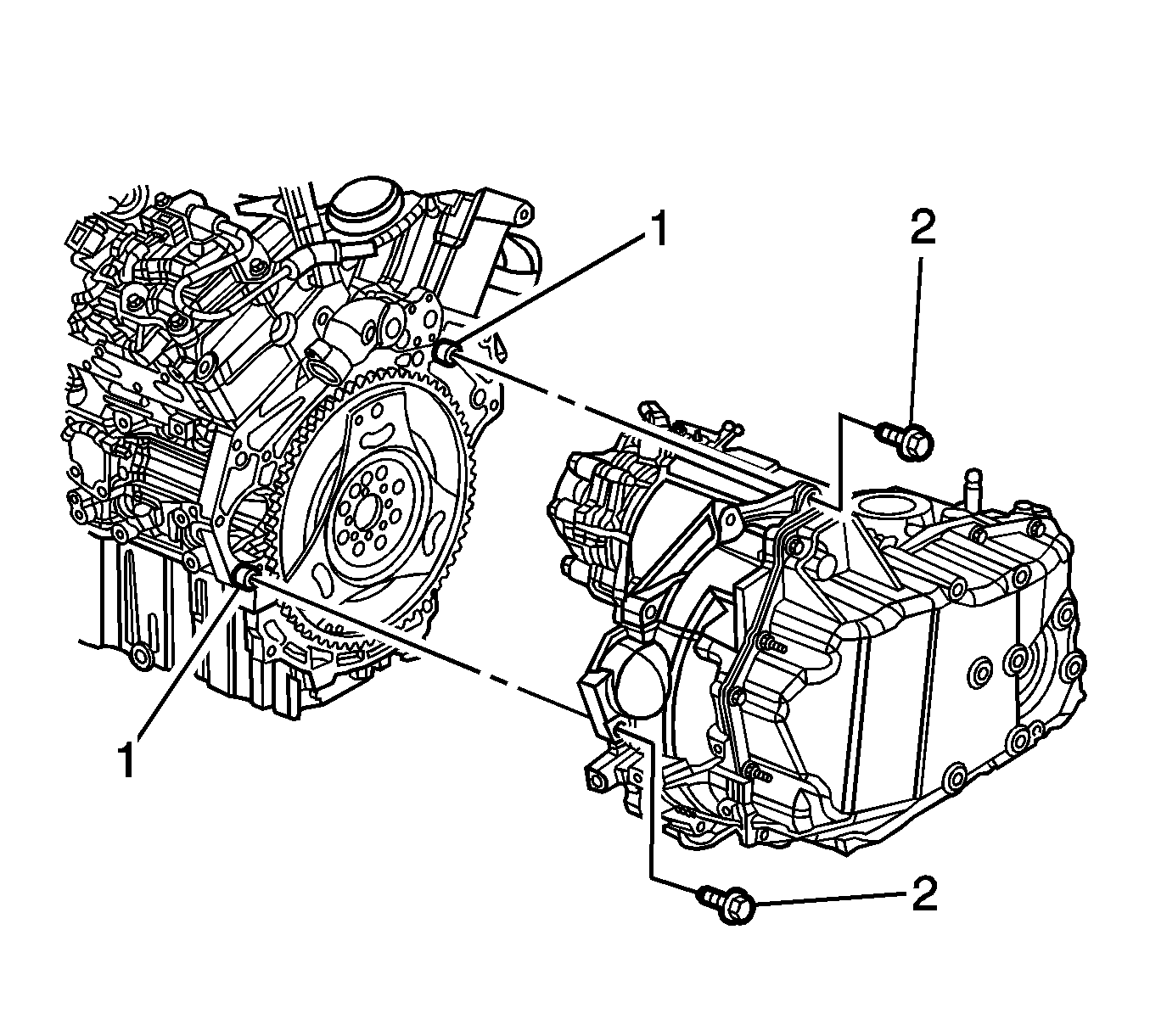
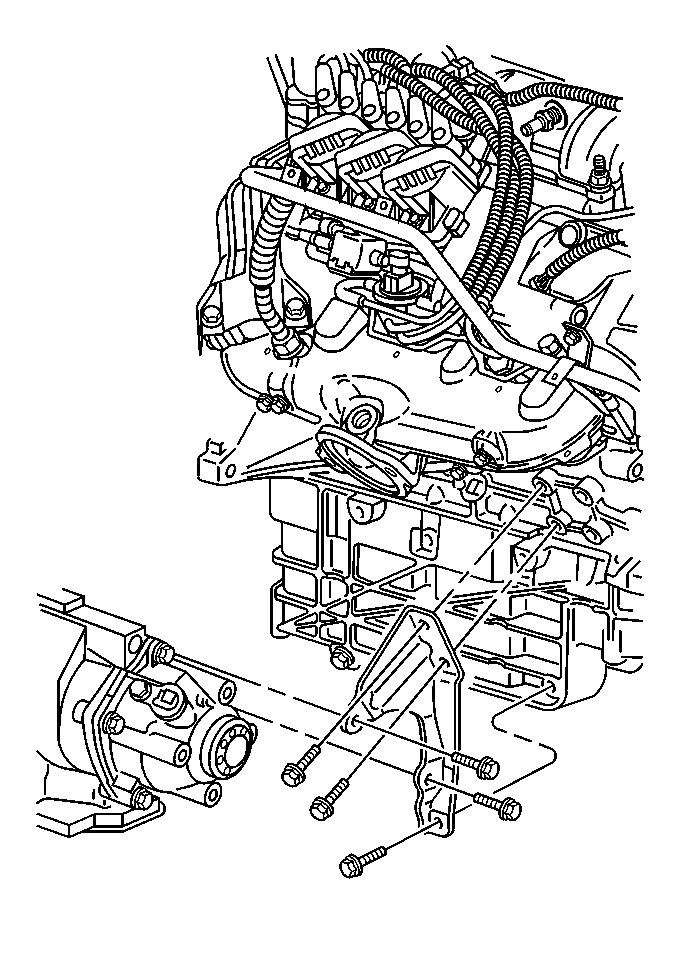
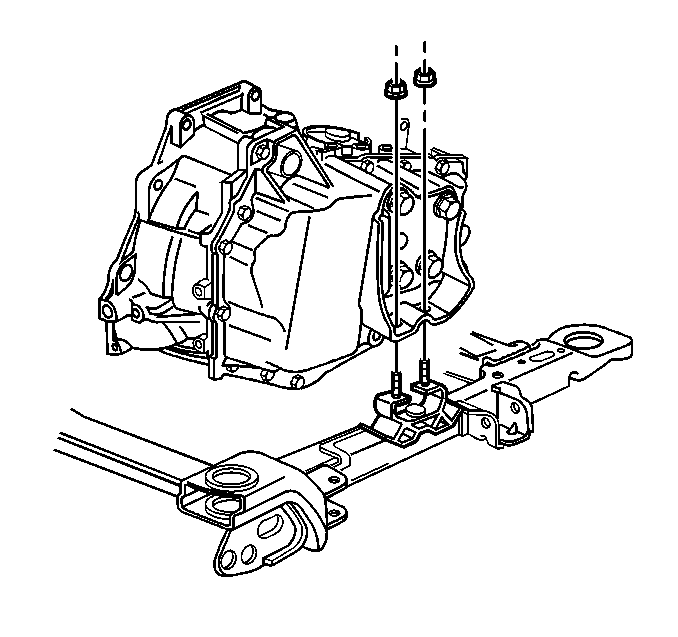
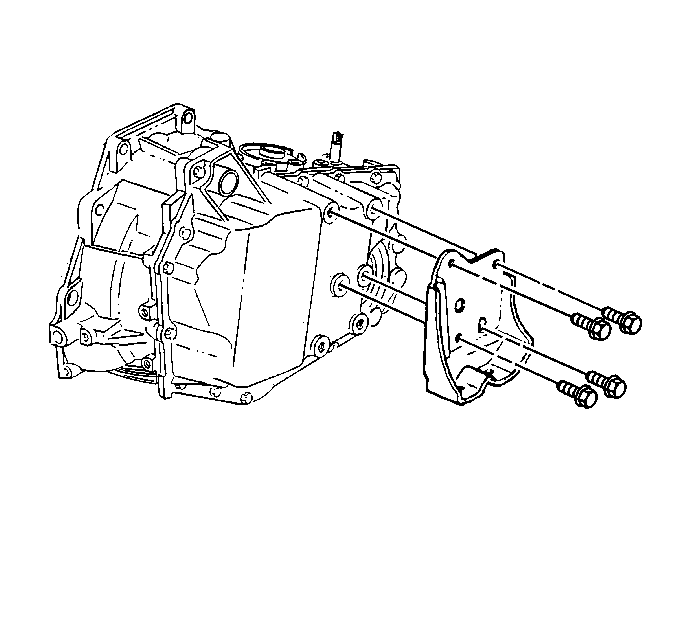

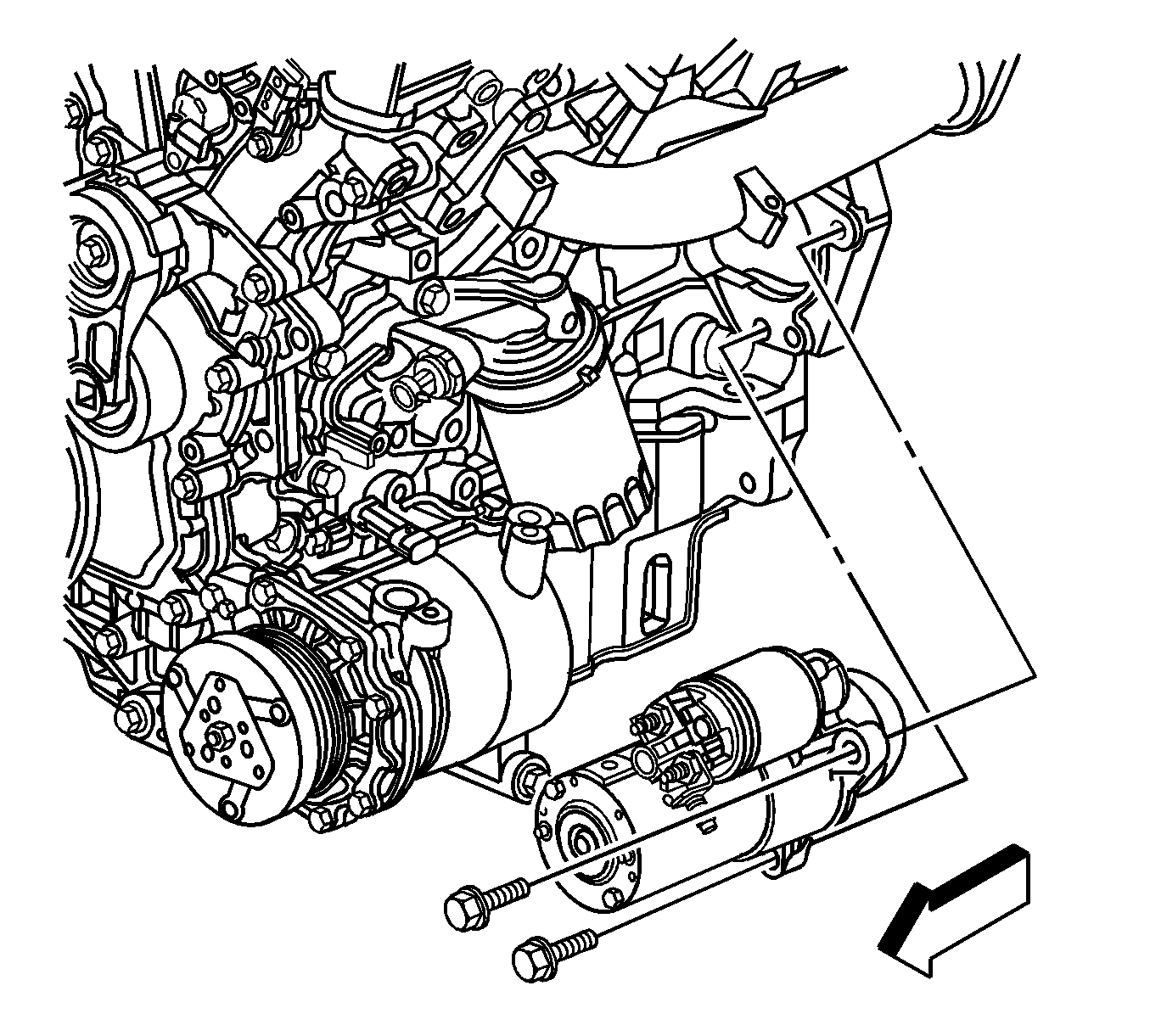
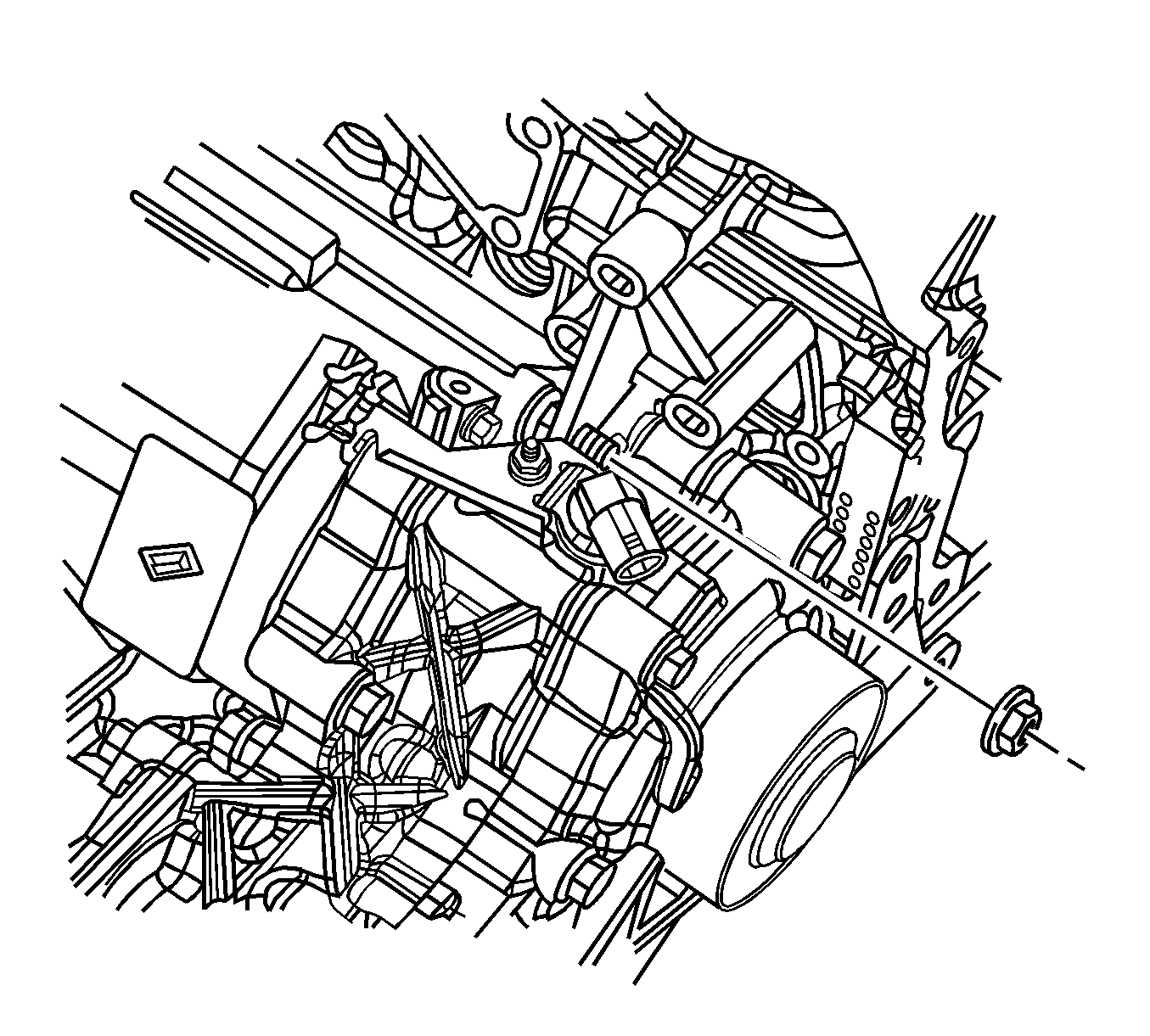


Installation Procedure
Important: If you are replacing the transaxle, transfer case or any internal components, you must inspect the end play and adjust as needed. Refer to Transmission to Transfer Case End Play Check in Automatic Transaxle - 4T65-E Unit Repair.
- If the vehicle is equipped with AWD (M76), install the transfer case. Refer to Transfer Case Installation in Automatic Transaxle - 4T65-E Unit Repair.
- Remove the transmission support fixture.
- Use the dowel locator pins (1) in order to align and install the transmission to the engine.
- Install the transmission bell housing bolts (2).
- Install the transmission bell housing bolt near the crank sensor and the engine coolant (block) heater.
- Install the transmission upper brace.
- Install the transmission upper brace bolts.
- Install the transmission upper brace nut located behind the power steering pump and above the transfer case.
- Install the torque converter bolts. Refer to Flywheel to Torque Converter Bolt Replacement .
- If equipped with LX9, install the starter motor.
- Install the starter motor bolts.
- If equipped with LY7, install the starter motor.
- Install the starter motor bolts.
- Position the transaxle mount bracket.
- Install the transaxle mount bracket bolts.
- Remove the utility stand.
- Install the transaxle mount upper nuts.
- Install the coolant inlet pipe. Refer to Radiator Inlet Hose Replacement in Engine Cooling.
- If the vehicle is equipped with AWD (M76), install the transfer case brace.
- Install the transfer case brace bolts and nuts.
- Install the transaxle brace.
- Install the transaxle brace bolts.
- Use the dowel locator pins (1) in order to align and install the transmission to the engine.
- Install the bell housing bolts (2).
- Install the fluid filler tube seal in the transaxle.
- Install the filler tube.
- Install the fluid filler tube bolt.
- Install the fluid filler tube nut.
- Install the powertrain (engine, transmission, frame) to the vehicle. Refer to Engine Replacement in Engine Mechanical - 3.5L or Engine Replacement in Engine Mechanical - 3.6L (LY7).
- Install the transmission lower bell housing bolt located between the engine oil pan and the transmission oil pan.
- Lower the vehicle.
- Inspect and adjust the transaxle fluid level as needed. Refer to the following information:
- Reset the TAP values. Refer to Transmission Adaptive Functions .

Notice: Refer to Fastener Notice in the Preface section.
Tighten
Tighten the transmission bell housing bolts to 50 N·m (37 lb ft).

Tighten
Tighten the transmission bell housing bolt to 50 N·m (37 lb ft).

Tighten
| • | Tighten the transmission upper brace outboard bolts (2) to 23 N·m (17 lb ft). |
| • | Tighten the transmission upper brace inboard bolts (1) to 50 N·m (37 lb ft). |

Tighten
Tighten the transmission upper brace nut to 50 N·m (37 lb ft).

Tighten
Tighten the starter motor bolts to 40 N·m (30 lb ft).

Tighten
Tighten the starter motor bolts to 50 N·m (37 lb ft).

Tighten
Start with the forward lower bolt and work clockwise to tighten the transaxle mount bracket bolts to 95 N·m (70 lb ft).

Tighten
Tighten the transaxle mount upper nuts to 47 N·m (35 lb ft).
Tighten
| • | Tighten the transfer case brace bolts to 50 N·m (37 lb ft). |
| • | Tighten the transfer case brace nuts to 50 N·m (37 lb ft). |

Tighten
Tighten the bolts to 43 N·m (32 lb ft).

Tighten
Tighten the bolts to 50 N·m (37 lb ft).
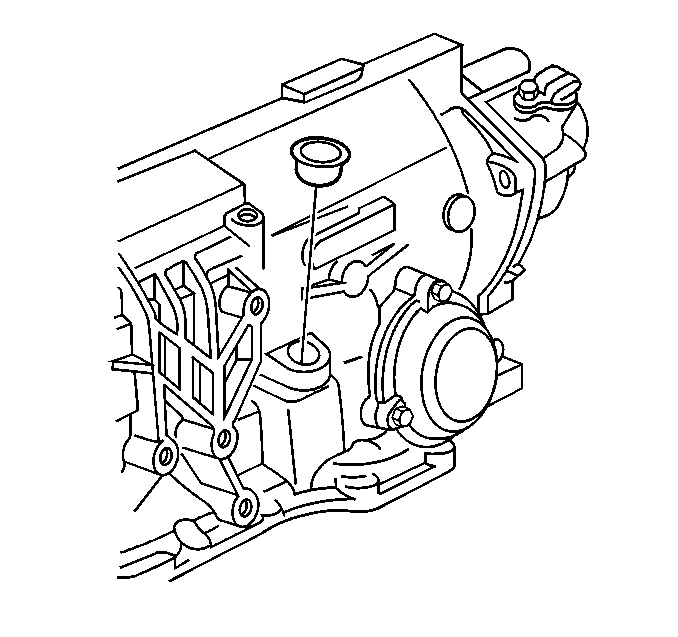
Important: Do NOT place the fluid filler tube seal on the fluid filler tube when installing the tube or damage to the seal will result.

Tighten
Tighten the bolt to 13 N·m (115 lb in).
Tighten
Tighten the nut to 13 N·m (115 lb in).

Tighten
Tighten the transmission bell housing bolt to 50 N·m (37 lb ft).
Important: It is recommended that transmission adaptive pressure (TAP) information be reset.
Resetting the TAP values using a scan tool will erase all learned values in all cells. As a result, the ECM, PCM or TCM will need to relearn TAP values. Transmission performance may be affected as new TAP values are learned.